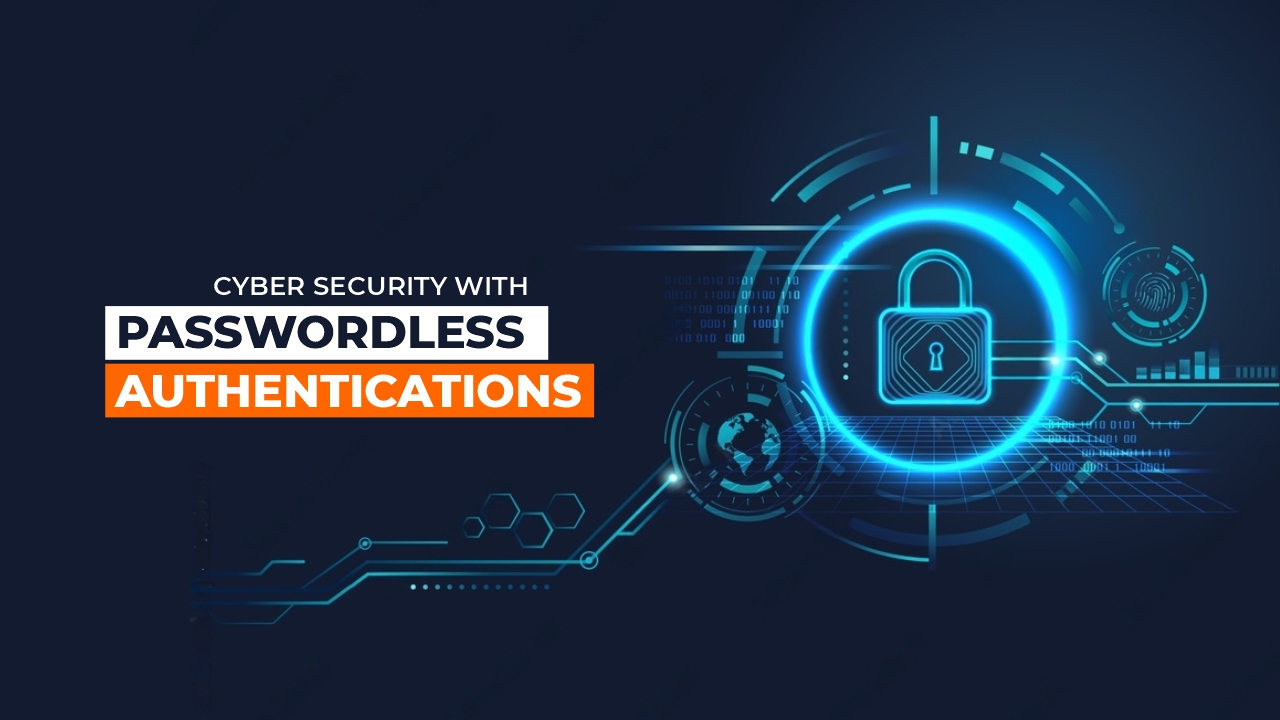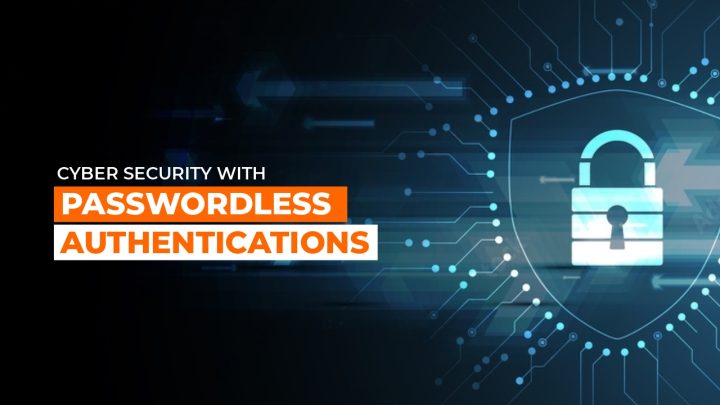Strong cybersecurity is paramount. Passwords, the traditional authentication method, are becoming more vulnerable due to weak passwords, reuse, and advanced hacking. Hence, organizations are adopting password-less authentication for improved security and convenience.
The article covers password-less authentication, its advantages, challenges, and its role in bolstering cybersecurity.
The Limitations of Passwords
Passwords have been the primary means of authentication for decades, but they have several inherent weaknesses:
- Weak Passwords
Many users create weak passwords that are easy to guess or crack. Common choices like “123456” or “password” continue to be widely used, making it relatively simple for attackers to gain unauthorized access.
- Password Reuse
Users often reuse passwords across multiple accounts. When one of these accounts is compromised, it can have a domino effect, putting all other accounts at risk.
- Credential Stuffing Attacks
Attackers use automated tools to launch credential stuffing attacks to guess known username/password combinations obtained from previous breaches on various websites. This technique is highly effective when users reuse passwords.
- Phishing
Phishing attacks trick users into revealing their passwords or other sensitive information by posing as legitimate entities. Even cautious users can fall victim to convincing phishing attempts.
- Complexity and User Experience
Organizations demand complex passwords for security, mixing upper and lower case letters, numbers, and special characters. This can frustrate users, leading to note-taking or using predictable variations.
What Is Passwordless Authentication?
Passwordless authentication is an authentication method that eliminates the need for traditional passwords. Instead, it relies on other factors for user verification. We can categorize these methods into three categories:
- Biometric Authentication
Biometric authentication relies on unique physical or behavioral traits, like fingerprints and facial recognition to verify identity. It’s highly secure because attackers struggle to replicate these traits accurately.
- Something You Possess
This category requires a physical item like a smart card, security token, or specialized app on a mobile device for authentication. Users must present this item to gain access.
- Something You Are
This category includes attributes like DNA, retina patterns, or fingerprints, which fall under biometrics. It also covers less common traits like vein pattern recognition or ear shape analysis. Passwordless authentication uses these factors, alone or combined, to enhance security while simplifying the process for users.
Benefits of Passwordless Authentication
The adoption of passwordless authentication offers several compelling benefits for both organizations and users:
- Enhanced Security
Passwordless authentication significantly improves security by eliminating the risk of password-related vulnerabilities. Biometric factors and possession-based methods are difficult to compromise.
- Improved User Experience
Passwordless authentication simplifies the user experience. Users no longer need to remember complex passwords.
- Reduced Password Reset Requests
The absence of passwords reduces the need for password resets due to forgotten or compromised passwords. It saves organizations time and resources associated with user support.
- Mitigation of Credential Stuffing Attacks
Passwordless authentication makes credential stuffing attacks ineffective, as attackers can’t exploit compromised passwords when there are no passwords to compromise.
- Lower Costs
Password-related security incidents can be costly for organizations. Having passwordless authentication in place, you can reduce cybersecurity-related costs incurred on incident response and recovery.

How to Implement Passwordless Authentication?
Implementing passwordless authentication in your organization requires careful planning and execution. Here are some steps to get you started:
- Assess Your Current Authentication Methods
Begin by assessing your current authentication methods and identifying areas where you can implement passwordless authentication.
- Choose the Right Method(s)
Select passwordless authentication methods that align with your organization’s security requirements and user preferences. You may opt for biometric authentication, possession-based methods, or both.
- Update Your Infrastructure
Implementing passwordless authentication may require updates to your IT infrastructure. Ensure that systems, applications, and devices are compatible with your chosen authentication methods.
- Educate and Train Users
User education and training are essential for successful adoption. Familiarize users with the new authentication methods, emphasize their benefits, and provide clear instructions on how to use them.
- Monitor and Audit
Regularly monitor and audit your passwordless authentication system to detect and address any issues or anomalies. This includes tracking user access and investigating any suspicious activity.
- Stay Informed About Threats
Stay informed about emerging cybersecurity threats and vulnerabilities related to your authentication methods. Implement security best practices to protect against evolving threats.
Conclusion
Passwordless authentication is a game-changer for verifying user identities in the digital age. It replaces traditional passwords with more secure and user-friendly methods, boosting cybersecurity while improving the user experience. Despite challenges, the benefits make it a compelling choice for safeguarding digital assets and users from evolving cyber threats.
FAQ’s
- What is passwordless authentication in cybersecurity, and how does it work?
Passwordless authentication in cybersecurity eliminates the need for traditional passwords. Instead, it relies on alternative methods like biometrics, smart cards, or one-time codes. Users prove their identity through these methods, enhancing security and reducing the risk of password-related breaches.
- Why is Passwordless authentication considered more reliable than traditional password-based methods?
Passwordless authentication is more reliable than traditional methods, as it resists common risks like password theft and phishing. Biometrics and unique tokens strengthen user verification, reducing unauthorized access and enhancing cybersecurity.
- What are the primary benefits of implementing passwordless authentication for cybersecurity?
Passwordless authentication offers numerous cybersecurity benefits. It enhances security by reducing the risk of password-related breaches and phishing attacks. It improves user convenience, eliminates the need for memorizing complex passwords, and enhances the overall user experience.
- Are there different types of passwordless authentication methods available, and how do they compare?
Biometrics, smart cards, and one-time codes are a few passwordless authentication methods that offer complete security, user-friendliness, and deployment complexity.
- How does biometric authentication contribute to the reliability of passwordless security?
Biometric authentication enhances passwordless security by using unique physical or behavioral traits, such as fingerprints or facial features, for user verification. These traits are difficult to replicate or steal, making them highly reliable.
- What role does multi-factor authentication (MFA) play in enhancing the security of passwordless authentication?
Multi-factor authentication (MFA) complements passwordless authentication by adding an extra layer of security. It requires multiple levels of verification, such as a fingerprint and a smart card, further reducing the risk of unauthorized access.
- Is passwordless authentication suitable for all types of organizations and industries?
Passwordless authentication is not universally suitable for all organizations and industries. While it enhances security and user experience, its applicability depends on an organization’s size, regulatory requirements, and existing IT infrastructure.
- Are there regulatory compliance considerations when using passwordless authentication methods?
Yes, there are regulatory compliance considerations when using passwordless authentication methods. Organizations must ensure that the method they choose is aligned with data protection regulations such as GDPR or HIPAA. They must also maintain audit trails and adhere to specific industry standards to meet compliance requirements effectively.
- Can you provide examples of successful implementations of passwordless authentication in real-world cybersecurity scenarios?
Companies like Microsoft and Google utilize biometric data, security keys, or mobile-based authentication to enhance security. These methods reduce the risk of password-related breaches and improve user experience.
- How does passwordless authentication improve the user experience while maintaining high-security standards?
Passwordless authentication enhances the user experience by eliminating the need to remember complex passwords. It’s convenient and quick, reducing friction for users. High-security standards are maintained through methods like biometrics and security keys, making it difficult for unauthorized access while streamlining the authentication process.
- What best practices should organizations follow when adopting passwordless authentication for their cybersecurity strategy?
To adopt passwordless authentication effectively, organizations should conduct risk assessments, select suitable methods, ensure robust integration, educate users, and provide backup options.
- What are some emerging trends and technologies related to passwordless authentication in the cybersecurity field?
Emerging trends in passwordless authentication include behavioral biometrics, zero trust security models, decentralized identifiers (DIDs) on a blockchain, FIDO2 standards adoption, passwordless mobile apps, and AI-driven risk assessment.
- How can organizations measure and evaluate the reliability and effectiveness of their passwordless authentication systems
Organizations evaluate passwordless systems through metrics, user feedback, security incidents, penetration tests, audits, and compliance checks to gauge reliability and effectiveness.
